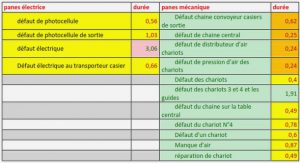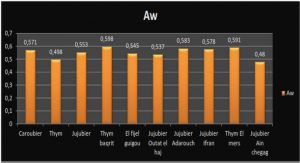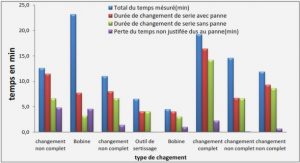♣ Contenu du memoire
INTRODUCTION
CHAPITRE I – PARTIE BIBLIOGRAPHIQUE
Généralités sur la photodégradation, les photostabilisants et les méthodes de synthèse des absorbeurs UV à base de 2-hydroxybenzophénone
I. INFLUENCE DE L’ENVIRONNEMENT SUR LES MATERIAUX POLYMERES
II. EFFETS DES RAYONNEMENTS UV SUR LES MATERIAUX POLYMERES
1. Rayonnement UV
2. Dégradation par irradiation UV (photodégradation)
2.1. En atmosphère inerte (photolyse)
2.2. En présence d’air (photo-oxydation)
III. PROTECTION CONTRE LES RAYONNEMENTS UV
1. Les agents de transfert d’énergie (quenchers)
2. Anti radicaux libres
2.1. Anti radicaux libres à base de phénol encombré
2.2. Anti radicaux libres à base d’amine encombré (HALS)
3. Absorbeurs de la lumière UV
3.1. Composés minéraux
3.2. Absorbeurs UV organiques
IV. LIAISON D’HYDROGENE INTRAMOLECULAIRE
V. EFFICACITE DES ABSORBEURS UV
1. Absorption
2. Dissipation
3. Durabilité
3.1. Perte physique
3.2. Perte chimique
VI. METHODES DE SYNTHESE DES STABILISANTS A BASE DE 2 HYDROXYBENZOPHENONE
1. Benzoylation par la réaction de Fridel et Crafts
2. Benzoylation par la réaction de réarrangement de Fries
3. Benzoylation en milieu hydraté
4. Benzoylation en présence des zéolithes
CHAPITRE II – PARTIE EXPERIMENTALE
Synthèse des photostabilisants contenant le groupe ortho hydroxybenzophénone
I. PRODUITS UTILISES
1. Réactifs
1.1. Réactifs principaux
1.2. Catalyseurs
1.3. Desséchants
2. Solvants
II. PROCEDES DE SYNTHESE
1. Synthèse d’acide acétylsalicylique (aspirine)
2. Synthèse du chlorure d’acide acétylsaliçyloyl
3. Synthèse du 2-hydroxy-4’-méthyl benzophénone
4. Synthèse du 2-acétoxy-4’-méthyl benzophénone
5. Synthèse du 2-hydroxy-4’-bromométhylène benzophénone
6. Synthèse du 2-hydroxy-4’-vinyl benzophénone
7. Synthèse du poly (2-hydroxy-4’-vinyl benzophénone)
III. TECHNIQUES D’ANALYSES
1. Spectroscopie de résonance magnétique nucléaire (RMN 1H, 13C) 2. Spectroscopie de masse
3. Spectroscopie infrarouge à transformé de fourier
4. Chromatographie
5. Point de fusion
6. Spectroscopie UV-Visible
CHAPITRE III – RESULTATS ET DISCUSSION
Identification et caractérisation des produits de synthèse
I. SCHEMA REACTIONNEL GENERAL DE SYNTHESE DES DIFFERENTS PRECURSEURS
II. PROCEDES DE SYNTHESE DES PRECURSEURS
1. Synthèse d’acide acétylsalicylique (aspirine)
1.1. Procédé de synthèse
1.2. Détermination de la structure
2. Synthèse du chlorure d’acide acétylsaliçyloyl
2.1. Procédé de synthèse
2.2. Détermination de la structure
3. Synthèse du 2-hydroxy 4’-méthyle benzophénone
3.1. Procédé de synthèse
3.2. Détermination de la structure
4. Synthèse du 2-acétoxy 4’-méthyle benzophénone
4.1. Procédé de synthèse
4.2. Détermination de la structure
5. Synthèse 2-hydroxy 4’-bromométhylène benzophénone
5.1. Procédé de synthèse
5.2. Détermination de la structure
6. Synthèse du 2-hydroxy 4’-vinyl benzophénone
6.1. Procédé de synthèse
6.2. Détermination de la structure
7. Synthèse du poly (2-hydroxy 4’-vinyl benzophénone)
7.1. Procédé de synthèse
7.2. Détermination de la structure
III. PROPRIETES ABSORBANTES
CONCLUSION
REFERENCES BIBLIOGRAPHIQUES





